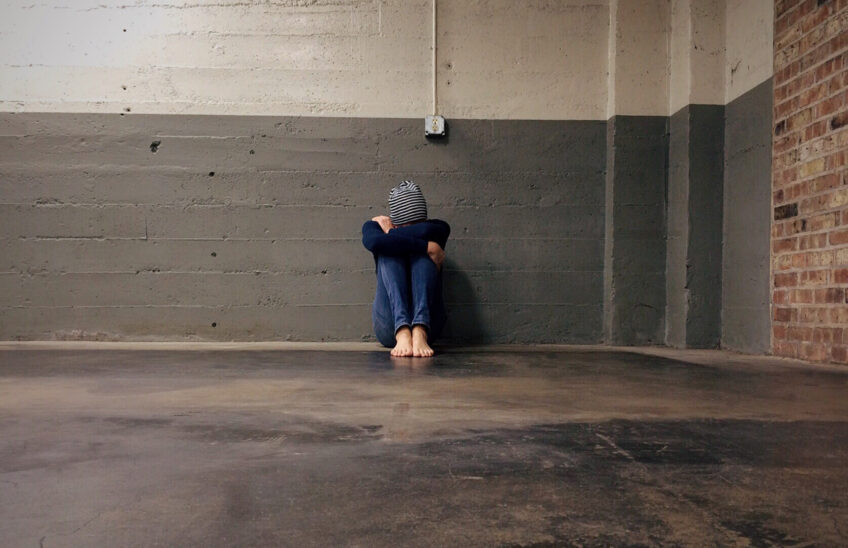Since starting humanutopia, I have run hundreds of programmes aimed at helping young people make more of their lives by transcending their past and becoming more optimistic for their future. Throughout this process, we ask young people to reflect on why their self-perceptions are so limited, and on almost every occasion these self-imposed restrictions were born as a result of unkind remarks made by other people. The process actually helps young people confront both themselves and each other to help them better understand the reasons for, and root causes of, their behaviour.
So just why have the Anti-Bullying workshops of humanutopia had such unrivalled success in the face of relative failure in many other cases? These are the 4 things that I do consistently in order to create and run really effective anti-bullying courses.
- Create and maintain an emotionally and psychologically safe environment
It might sound like the most obvious starting point, but the truth is that many lessons in many schools are unbearably unsafe and extremely high risk for already vulnerable schoolchildren. Initial Teacher Training and subsequent CPD sessions for experienced staff pay little or no attention to helping teachers understand the need for creating and sustaining a safe environment. As a result, the vast majority of students I have worked with have told me that they feel neither emotionally nor psychologically safe in school.
This is certainly easier said than done, but it is far from impossible. When our young teams go in, to work with year groups that sometimes have over 200 students, our first aim is to establish and maintain an environment where it is safe for young people to express themselves without fear of ridicule or reprisal. As hard as it might be to believe, over the past 15 years I have witnessed literally thousands of students stand up and give truthful, and on too many occasions heart-breaking, accounts of how they have been bullied at school.
Naturally, over this time some people have questioned the merits of young people standing up and sharing their most painful moments with, in many cases, the very students who have been inflicting the pain upon them. In my experience, almost all the students who have stood up to speak have reported feeling lighter and happier that they have managed to express themselves and get these bottled up feelings off their chest. In many cases, it also helps teachers discover unhappy students that had previously not been on their radar.
- Ensure that all views and opinions are listened to without condemnation or judgement
Once again, this is easier said than done because teachers have a duty to report all bullying and safeguarding matters. Our workshop teams share these responsibilities and are thoroughly trained in these matters. However, we also train all our workshop leaders to listen to all students with deep empathy and compassion. We insist that our teams show no judgement, giving the bully and the bullied equal respect when they are speaking, and in doing so we model the best possible behaviour for the listening students.
In my experience of listening to young people talk about being bullied, they will do so far more freely when they trust and respect the facilitator. It is almost part the genetic make-up of an adult, parent or teacher that once they have heard a young person speak, we instantly want to condemn, respond or solve the problem we have just heard. It is so powerful & empowering for a young person when you simply allow the student to speak and encourage them to continue by asking relevant & pertinent questions.
This same method is used for listening to bullies give their accounts of how they feel and their reflections on their behaviour. If the facilitator shows compassion and the young person trusts them, and the facilitator asks the right questions, there is far more chance of the bully understanding their behaviour, and showing remorse and redemption. Again, it is critically important for the audience to see how the facilitator shows compassion to the bully and empowers them to learn from their behaviour.
- Allow the audience to deeply understand the consequences of bullying.
In all my audiences, I ensure that everyone can hear the person speaking, and I ask the person speaking to describe how they have been bullied by using the language they hear. I ask them to describe in detail any further actions associated, i.e. physical abuse, online abuse, being left out, etc. in order to give the audience the best opportunity to walk in the victim’s shoes. The emotion in these rooms at these points is tangible as many young people realise the error of their ways, and this helps them to understand the tragic consequences of their actions.
I then ask the young person to describe how these words and actions make them feel; what do they feel like and how does it affect them? The testimonies & statements I have heard at this point are harrowing and haunting, and when listening to them it takes every ounce of resilience and professionalism not to allow myself to be overcome by grief.
Hearing these young people describe in many cases how they no longer want to come to school; how they feel worthless; how they don’t see where they fit into the world and, in the worst-case scenarios, how young people have thought about or attempted to take their own lives is simply not what school is for and not what life on this planet is meant to be about. The impact on the observing audiences has to be seen to be believed as young people sit silently, reflecting deeply on what they have heard and felt and how they need to rethink their attitude, behaviour and allegiances.
- Use Positive Psychology to help the young people move forward.
One of the things lacking so badly in the minds of young people is hope. This is partly because their young minds haven’t expanded enough to imagine how to be hopeful, and because they simply haven’t experienced enough positive things for their minds to identify with. In my opinion, our education system often systematically chips away at- and eventually erodes- hope from young lives, when its primary aim should be to shroud these vulnerable young people with hope and love, ready for life’s journey.
Traditional psychology normally addresses the root causes of problems and seeks to have the patient analyse the source of the distress. More often than not, there is a focus on ‘weakness’ and what is wrong with the patient (or in this case, the students). Reflections on past experience or troubled times will obviously and inevitably cause negative emotions and negative thought processes and behaviours. In my experience, watching a young person describe their experiences and emotions is draining and demotivating for them, leading them to feel even more anxious and stressed.
I prefer to use a more contemporary approach to listening to young people. I first tune in intensely to what they are saying. I then use a framework of questions which help the young person gain a new perspective that acknowledges their painful experience, but challenges them to focus on the positive strengths, values and skills that the student has. In a matter of minutes, and with a few carefully chosen questions that focus the conversation, the discussion helps the young person redirect their energy and start to create a new set of reference points with which to go forward.
For the past fifteen years, when running anti-bullying workshops, I have followed these four steps religiously in order to create a safe and productive space that allows young people to hit reset, whilst giving themselves – and each other – permission to reinvent themselves and create a new culture. The impact of these workshops has astonished even me, as day after day, young people share their experiences with their peers, expressing themselves in a way they could never have imagined, having their voice heard in a safe and supportive environment. Time and again, I have watched bullies stand up in tears and apologise to their victims, explaining their actions.















